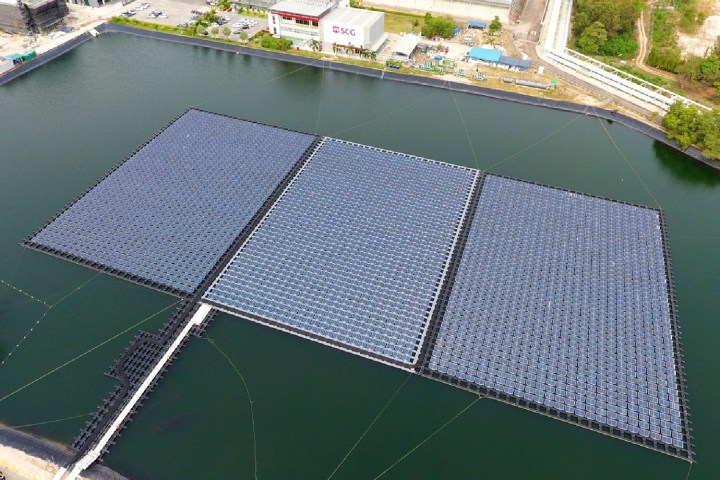
Thailand has big plans when it comes to solar energy: The country’s Siam Cement Group (SCG) hopes to install a giant 45-megawatt floating solar farm at the Sirindhorn Dam — the first of eight dams that may receive the treatment.
Floating solar farms provide the benefits of solar energy without taking up valuable space on dry land in densely populated areas. Other advantages include their comparative ease of installation and decommissioning, along with helping to reduce evaporation as a result of partially covering the water surface. During the approximately 10 years that floating photovoltaics have been around, they have garnered a particularly enthusiastic response in populous countries such as China, Japan, India, and South Korea. Now it seems that Thailand is eager to get in on the action as well.
SCG is among Southeast Asia’s biggest manufacturers of building materials. It has developed its own proprietary floating solar panels that it promises to build, install, and maintain. SCG’s panels are made from high-density polyethylene, which is both durable and recyclable. The company claims that its panels will last for around half a century and take up approximately 10 percent less space than the floating plants developed by rival companies.
The plan to build a floating solar plant at Sirindhorn Dam is the first part of an ambitious floating solar panel project announced by Thailand’s state-run Electricity Generating Authority of Thailand (EGAT), according to a report from IEEE Spectrum. The department has plans to build floating solar panels, with a total capacity of 1 gigawatt, across eight and reservoirs dams over the next couple of decades. The Sirindhorn Dam will be the first of these, with four other projects to follow on soon after. EGAT hopes to begin construction as soon as April, although it has yet to reveal which company it is going to award the contract to.
At present, Thailand generates around 12 percent of its energy from sustainable sources. (That’s compared to around 18 percent in the U.S., as of 2018.) Thailand’s government hopes that initiatives such as its floating solar plants can help increase this to 37 percent by 2036. Should all go according to plan, around 6 percent of the country’s total power could come from floating solar farm projects such as this one.
Editors' Recommendations
- ‘World’s largest sundial’ to double as green energy provider
- Harnessing darkness: The race to solve solar power’s greatest problem
- Lithium-ion is just the beginning. Here’s a peek at the future of batteries
- JBL’s solar-powered headphones could eliminate the need for recharging
- Clean-energy startup backed by Bill Gates hopes to replace fossil fuels


